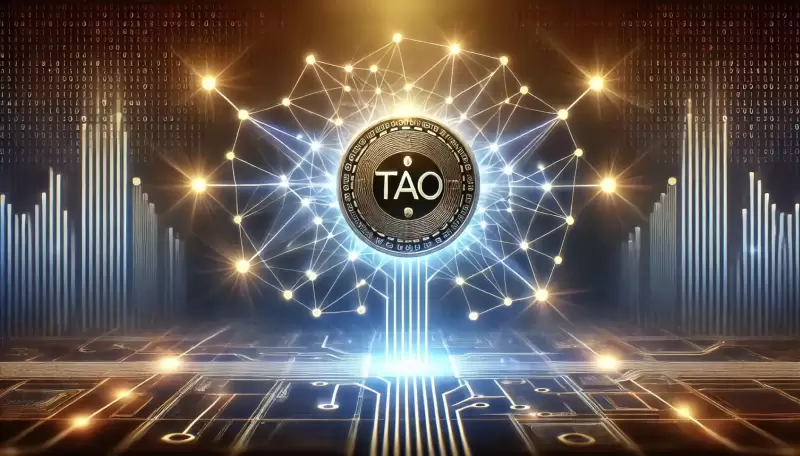 |
|
 |
|
 |
|
 |
|
 |
|
 |
|
 |
|
 |
|
 |
|
 |
|
 |
|
 |
|
 |
|
 |
|
 |
|
Bittensor는 고품질 AI 모델을 분산 방식으로 개발할 수 있는 지능형 시장 형성을 목표로 하는 분산 네트워크입니다.

Title: Demystifying Bittensor: How's the Decentralized AI Network?
제목: Demystifying Bittensor: 분산형 AI 네트워크는 어떤가요?
Authors: Ming Ruan, Wenshuang Guo, Animoca Brands Research
저자: Ming Ruan, Wenshuang Guo, Animoca Brands Research
Compiled by: Scof, ChainCatcher
편집자: Scof, ChainCatcher
Overview: Demand for Decentralized AI
개요: 분산형 AI에 대한 수요
Rapid advancements in artificial intelligence (AI) technology are undeniable, but this progress is not without its challenges. Currently, centralized data training models dominate the field, primarily controlled by tech giants like OpenAI, Google, and X (formerly Twitter).
인공지능(AI) 기술의 급속한 발전은 부인할 수 없지만 이러한 발전에는 어려움도 있습니다. 현재 중앙 집중식 데이터 훈련 모델이 이 분야를 지배하고 있으며 주로 OpenAI, Google, X(이전의 Twitter)와 같은 거대 기술 기업이 제어합니다.
Despite significant achievements in centralized AI training in recent years, it also has certain limitations. First, there are issues during the data training process, such as unauthorized use of private information, data censorship leading to distorted training outcomes, and a lack of traceability in data sources. In terms of algorithms, centralized models heavily rely on data quality and often struggle to perform real-time evaluations for iterative improvements.
최근 몇 년 동안 중앙 집중식 AI 훈련에서 상당한 성과가 있었음에도 불구하고 일정한 한계도 있습니다. 첫째, 데이터 훈련 과정에서 개인정보의 무단 사용, 데이터 검열로 인한 훈련 결과 왜곡, 데이터 소스 추적성 부족 등의 문제가 있습니다. 알고리즘 측면에서 중앙 집중식 모델은 데이터 품질에 크게 의존하며 반복적 개선을 위한 실시간 평가를 수행하는 데 종종 어려움을 겪습니다.
Decentralized AI training presents an alternative, but it faces enormous challenges, particularly due to resource shortages. Currently, the cost of training large models exceeds $100 million, making it nearly impossible for community-driven projects to compete. Decentralized efforts rely on voluntary contributions of computational power, data, and talent, but these resources are insufficient to support projects of similar scale. Therefore, the potential of decentralized AI remains limited and cannot fully compete with centralized AI in terms of scale and impact.
분산형 AI 훈련은 대안을 제시하지만 특히 리소스 부족으로 인해 엄청난 어려움에 직면해 있습니다. 현재 대형 모델을 훈련하는 데 드는 비용은 1억 달러를 초과하므로 커뮤니티 중심 프로젝트가 경쟁하는 것이 거의 불가능합니다. 분산화된 노력은 컴퓨팅 능력, 데이터 및 재능의 자발적인 기여에 의존하지만 이러한 리소스는 비슷한 규모의 프로젝트를 지원하기에는 부족합니다. 따라서 분산형 AI의 잠재력은 여전히 제한적이며 규모와 영향력 측면에서 중앙집중형 AI와 완전히 경쟁할 수 없습니다.
Source: Statista
출처: 스태티스타
Overview of Bittensor
Bittensor 개요
Bittensor is a decentralized network aimed at forming an intelligent marketplace where high-quality AI models can be developed in a decentralized manner. By leveraging incentive mechanisms and rewarding participants for providing computational resources, expertise, and innovative contributions, Bittensor has established an open-source AI capability ecosystem, where the native currency TAO serves both as a reward token and as a credential for accessing the network.
Bittensor는 고품질 AI 모델을 분산 방식으로 개발할 수 있는 지능형 시장 형성을 목표로 하는 분산 네트워크입니다. Bittensor는 컴퓨팅 리소스, 전문 지식 및 혁신적인 기여를 제공하기 위해 인센티브 메커니즘을 활용하고 참여자에게 보상함으로써 기본 통화인 TAO가 보상 토큰이자 네트워크 액세스를 위한 자격 증명 역할을 하는 오픈 소스 AI 기능 생태계를 구축했습니다.
The core components of Bittensor, including its Yuma consensus, subnets, and TAO token, were initially launched in November 2021 with the release of version "Satoshi" and were built as a parachain on Polkadot. It later migrated to a Layer 1 chain built on Polkadot Substrate in 2023, while the issuance plan for TAO remained unchanged.
Yuma 합의, 서브넷 및 TAO 토큰을 포함한 Bittensor의 핵심 구성 요소는 "Satoshi" 버전 출시와 함께 2021년 11월에 처음 출시되었으며 Polkadot에서 파라체인으로 구축되었습니다. 나중에 2023년에 Polkadot Substrate를 기반으로 구축된 레이어 1 체인으로 마이그레이션되었지만 TAO에 대한 발행 계획은 변경되지 않았습니다.
The creators and operating entity of Bittensor, the Opentensor Foundation, was co-founded by former Google engineer Jacob Steeves and machine learning scholar Ala Shaabana. The foundation currently has about 30 employees, almost all of whom are engaged in engineering functions, lacking roles in B2B market expansion, business development, partnerships, or developer relations.
Bittensor의 창립자이자 운영 주체인 Opentensor Foundation은 전 Google 엔지니어 Jacob Steeves와 기계 학습 학자 Ala Shaabana가 공동 창립했습니다. 재단에는 현재 약 30명의 직원이 있는데, 거의 모두 엔지니어링 기능에 종사하고 있어 B2B 시장 확장, 비즈니스 개발, 파트너십 또는 개발자 관계에 대한 역할이 부족합니다.
Fundamentals: How Does Bittensor Work?
기초: Bittensor는 어떻게 작동하나요?
Bittensor has developed an innovative network based on a dynamic incentive consensus framework, allowing participants to support the contribution of resources needed for producing machine intelligence. Each subnet operates as a model for a specific task, with its own independent performance evaluation criteria, and incentives are distributed through Bittensor's overall Yuma consensus.
Bittensor는 동적 인센티브 합의 프레임워크를 기반으로 혁신적인 네트워크를 개발하여 참가자가 기계 지능 생산에 필요한 리소스 기여를 지원할 수 있도록 했습니다. 각 서브넷은 고유한 독립적인 성능 평가 기준을 사용하여 특정 작업에 대한 모델로 작동하며 인센티브는 Bittensor의 전체 Yuma 합의를 통해 배포됩니다.
Let’s illustrate how a subnet operates through an analogy. A subnet can be likened to a magazine publisher that organizes writing competitions every month. Each month, an editor publishes a theme for writers to compete for a $10,000 reward pool. The criterion is "the work that best embodies the spirit of web3." Writers submit their articles to the editor for review, and all editors evaluate all submitted works. The results of the editors' evaluations determine the final rankings. The highest-ranked article will be published and receive the largest share of the rewards, while lower-ranked articles may also receive smaller rewards. All submitted articles and their scores will be shared with the participating writers and editors for feedback and learning. Through this incentive structure, writers will continue to participate and contribute, and the standards between writers and editors will gradually converge, allowing the magazine to publish high-quality articles that best "embody the spirit of web3."
비유를 통해 서브넷이 어떻게 작동하는지 설명해 보겠습니다. 서브넷은 매달 글쓰기 대회를 조직하는 잡지 출판사에 비유될 수 있습니다. 매달 편집자는 작가들이 $10,000의 보상 풀을 놓고 경쟁할 수 있는 주제를 게시합니다. 'web3의 정신을 가장 잘 구현한 작품'이 기준이다. 작가는 검토를 위해 자신의 기사를 편집자에게 제출하고, 모든 편집자는 제출된 모든 작품을 평가합니다. 에디터들의 평가 결과에 따라 최종 순위가 결정됩니다. 가장 높은 순위의 기사가 게시되고 가장 많은 보상을 받게 되며, 순위가 낮은 기사도 더 적은 보상을 받을 수 있습니다. 제출된 모든 기사와 점수는 피드백과 학습을 위해 참여 작가 및 편집자와 공유됩니다. 이러한 인센티브 구조를 통해 작가들은 지속적으로 참여하고 기여하게 될 것이며, 작가와 편집자 간의 기준이 점차 수렴되어 잡지가 "web3의 정신을 가장 잘 구현하는" 고품질 기사를 출판할 수 있게 될 것입니다.
In this analogy, the magazine publisher represents the subnet, the writers represent the miners, and the editors represent the validators. The process of editors aggregating evaluations of the articles is the Yuma consensus mechanism. In actual subnets, miners will receive TAO tokens instead of dollars, and these tokens are allocated by the root subnet (subnet 0); validators are also incentivized to align their standards with the aggregated scores to earn more rewards.
이 비유에서 잡지 출판사는 서브넷을 나타내고, 작가는 채굴자를 나타내며, 편집자는 검증자를 나타냅니다. 편집자들이 기사에 대한 평가를 종합하는 과정은 Yuma 합의 메커니즘입니다. 실제 서브넷에서 채굴자는 달러 대신 TAO 토큰을 받게 되며 이 토큰은 루트 서브넷(서브넷 0)에 의해 할당됩니다. 또한 검증인은 더 많은 보상을 얻기 위해 자신의 표준을 집계 점수와 일치시키도록 인센티브를 받습니다.
Within this framework, subnet owners train and acquire intelligent capabilities from miners through validators, building AI modules with specific functionalities. In addition to subnets, Bittensor also has other layers that support the overall functionality of the network:
이 프레임워크 내에서 서브넷 소유자는 검증자를 통해 채굴자로부터 지능형 기능을 훈련하고 획득하여 특정 기능을 갖춘 AI 모듈을 구축합니다. 서브넷 외에도 Bittensor에는 네트워크의 전체 기능을 지원하는 다른 레이어도 있습니다.
a. Application Layer
에이. 애플리케이션 계층
Users can interact with Bittensor through various applications that connect to subnets or act as subnets. Users submit service requests, such as language translation or data analysis, and the applications route the requests to the subnet via the validator API. The best miner answers are selected by validator consensus and returned to the users.
사용자는 서브넷에 연결하거나 서브넷 역할을 하는 다양한 애플리케이션을 통해 Bittensor와 상호 작용할 수 있습니다. 사용자는 언어 번역이나 데이터 분석과 같은 서비스 요청을 제출하고 애플리케이션은 유효성 검사기 API를 통해 요청을 서브넷으로 라우팅합니다. 최고의 채굴자 답변은 검증인 합의에 의해 선택되어 사용자에게 반환됩니다.
b. Execution Layer
비. 실행 계층
This layer consists of a group of subnets, all of which use Yuma consensus to train and utilize miners
이 계층은 서브넷 그룹으로 구성되며, 모두 Yuma 합의를 사용하여 채굴자를 훈련하고 활용합니다.
부인 성명:info@kdj.com
The information provided is not trading advice. kdj.com does not assume any responsibility for any investments made based on the information provided in this article. Cryptocurrencies are highly volatile and it is highly recommended that you invest with caution after thorough research!
If you believe that the content used on this website infringes your copyright, please contact us immediately (info@kdj.com) and we will delete it promptly.





























































